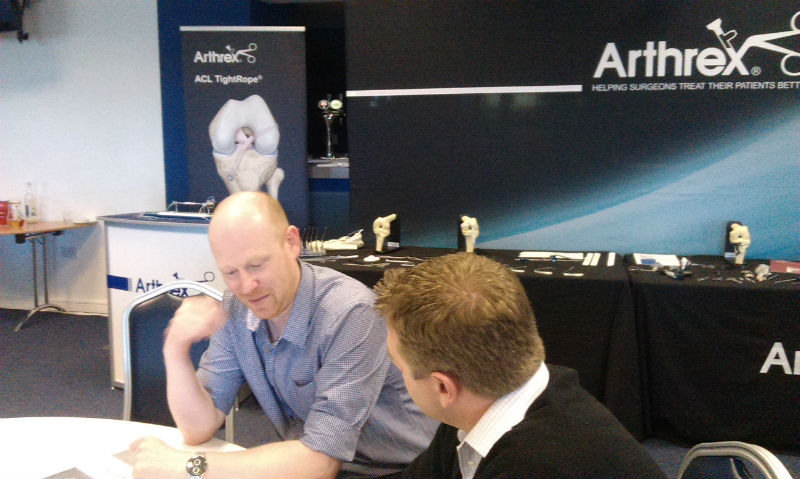A selection of discussions at a clinical meeting of knee experts held in Worcester, UK, in May 2015.

Duncan Learmonth, BSc FRCS - Why do ligament reconstructions fail?
- Poor patient selection - some patients will 'hammer' their graft or not co-operate with rehab. They may be young, and if they want to return to high risk sports they need to know the risks and maybe attend a FIFA programme
- Additional pathology, such as posterolateral corner laxity, medial collateral laxity, meniscal root injury, articular cartilage damage. Repair of a meniscal tear will hamper things because rehab needs to go slower with meniscal repair
- Surgeon factors - tunnel position in the notch needs to be optimal
- Graft type & thickness - autograft is best. Graft needs to be 8mm or more (but don't overstuff the notch)
- Graft tensioning & fixation - tensioning is important (25-30 Newtons). Most modern fixation devices are acceptable, but the endobutton needs to be flush on the bone
- ?Failure to preserve the ACL remnant - preserving the remnant may help in healing and proprioception
Charles Brown MD - Anatomic ACL reconstruction
- The debate continues about where in the femoral footprint the graft should be placed
- The point is that the footprint is larger than the drill hole, so it has to be decided where on the footprint one should make the tunnel
- Surgeon technique is important as the correct use of portals and knee position optimise access to the footprint
- Use of posts to hold the knee during surgery allow exact positioning without assistance
- If the remnant is being preserved, it is useful to use fluoroscopy to position the tunnels as the remnant obscures the view (but too much remnant may lead to a cyclops lesion)
Konrad Slynarksi MD PhD - Current thinking of ACL reconstruction
- Surgeons need to better understand the anatomy, especially with regard to the pivot shift and instability
- It is important to assess in particular the anterolateral ligament (the rotational stabiliser of the knee)
- It has become evident that the ACL remnant is important because of its nerve supply, and surgeons are using a new augmentation device of FibreTape wrapped in a porcine scaffold to help preserve the remnant
- Technically the inside-out drilling through an accessory antero-medial portal allows correct identification of the footprint of the ACL, and preserves more bone for any future revision
-
